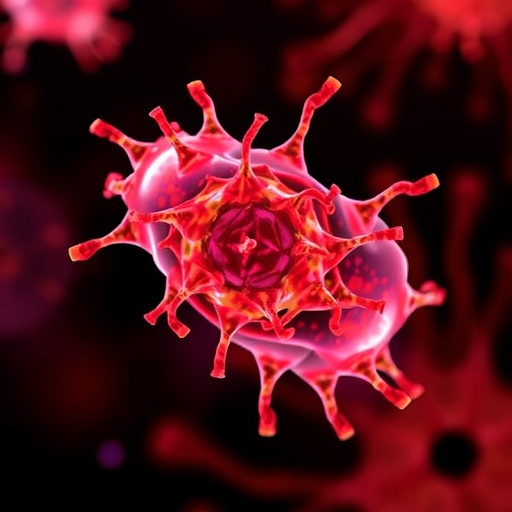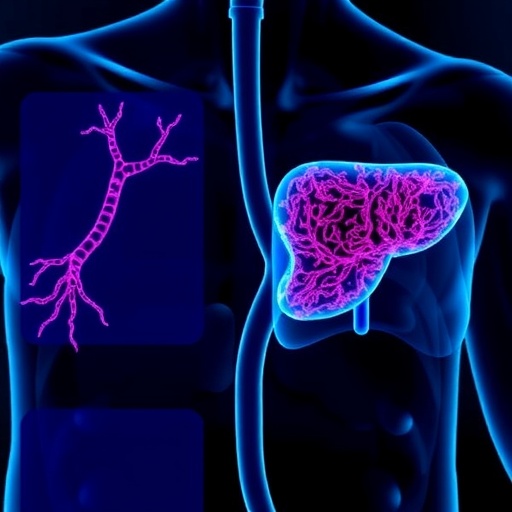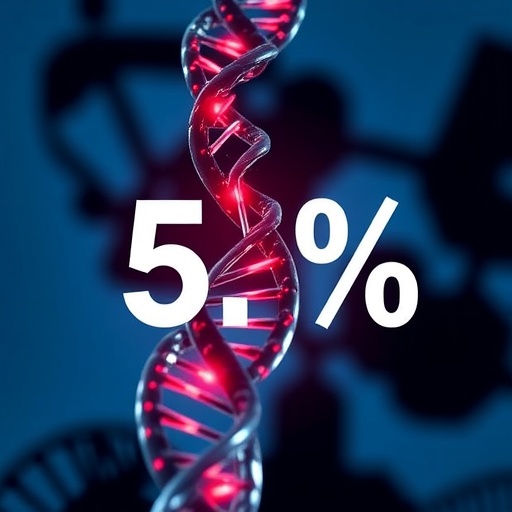Biliary tract cancers (BTCs) represent one of the most formidable challenges in oncology, distinguished by their aggressive nature and poor clinical prognosis. These malignancies, which include cholangiocarcinomas and gallbladder cancers, are notorious for their intense heterogeneity and complex tumor microenvironment, factors that have historically impeded progress in diagnostic precision and therapeutic innovation. Traditional bulk tissue analyses, while informative, have been insufficient for unraveling the nuanced cellular diversity and molecular intricacies within BTCs, leading to significant gaps in understanding tumor evolution, immune evasion, and treatment resistance.
In a groundbreaking review article published in the prestigious journal Molecular Biomedicine, researchers from Shanghai Jiao Tong University School of Medicine present an exhaustive synthesis of emerging single-cell multi-omics technologies that are revolutionizing BTC research. These state-of-the-art techniques integrate genomic, transcriptomic, epigenomic, and proteomic data at the resolution of individual cells, thereby illuminating the heterogeneity of tumor tissues with unprecedented clarity. This integrative approach enables scientists to dissect the cellular constituents, molecular features, and dynamic interactions within tumors, fostering a comprehensive atlas that can inform and transform clinical management strategies.
Single-cell multi-omics methodologies delve deeply into the distinct molecular subtypes that coexist within BTC tumors, revealing the clonal architecture and evolutionary pathways that define tumor progression. By mapping these heterogeneous populations, the studies elucidate how specific genetic mutations, gene expression patterns, and epigenetic modifications contribute to tumor biology. Such detailed cellular profiling holds the promise of identifying novel biomarkers predictive of disease course and therapeutic response, ultimately paving the way for highly personalized oncological interventions.
One of the pivotal insights emerging from this review highlights the intricate composition of the tumor microenvironment (TME), a complex ecosystem that encompasses a diverse array of cancer-associated fibroblasts (CAFs), immune cell populations, endothelial cells, and extracellular matrix components. Among CAFs, functional heterogeneity is particularly notable, with myofibroblastic CAFs (myoCAFs) implicated in driving angiogenesis through hepatocyte growth factor (HGF) and transforming growth factor-beta (TGF-β) signaling cascades. In contrast, inflammatory CAFs (iCAFs) secrete cytokines such as interleukin-6 (IL-6) and vascular endothelial growth factor A (VEGFA), promoting an inflammatory milieu that fosters tumor progression and immune modulation.
Moreover, single-cell analyses have shed light on the diverse immune cell subsets within BTCs, including tumor-infiltrating lymphocytes and macrophages, which engage in complex cross-talk with both tumor cells and stromal elements. The immune microenvironment’s spatial and functional heterogeneity affects tumor immunogenicity and resistance to immune checkpoint blockade therapies. Understanding the mechanistic underpinnings of immune evasion, facilitated by metabolic reprogramming and epigenetic alterations within tumor and stromal cells, is critical for devising effective immunotherapeutic strategies.
The application of single-cell multi-omics data has also revealed the dynamic metabolic states of tumor cells, illustrating how metabolic plasticity supports survival, proliferation, and immune escape. Specific metabolic pathways and epigenetic modifications have been identified as contributors to the immunosuppressive TME, representing potential targets for combination therapies designed to disrupt tumor metabolism and restore antitumor immunity. These findings underscore the necessity of multi-layered molecular analyses to capture the full spectrum of tumor biology and therapeutic vulnerabilities.
Mengyao Li, a corresponding author of the review, emphasizes the transformative potential of integrating data across multiple molecular layers. He remarks that such integrative efforts convert the simplistic, averaged view of tumors into a high-resolution, multidimensional atlas that captures cellular diversity and functional states. This refinement is not merely academic; it is foundational for the next frontier in individualized cancer therapy, enabling clinicians to tailor interventions based on the specific cellular and molecular context of each patient’s tumor.
The translation of single-cell multi-omics insights into clinical practice is already underway, with patient-derived organoids (PDOs) emerging as powerful platforms for drug screening and precision medicine. PDOs faithfully recapitulate the molecular heterogeneity and microenvironmental features of primary tumors, allowing for functional assays that predict drug sensitivities and resistances. This application represents a tangible leap toward personalized oncology, bridging bench discoveries with bedside decisions.
Despite remarkable advancements, the review acknowledges that significant hurdles remain. Technical challenges in sample dissociation, particularly from solid tumor tissues, pose limitations on preserving cell viability and capturing rare cell populations. Additionally, the computational complexity inherent in integrating multi-omics datasets demands sophisticated bioinformatic tools and standardized analytical workflows. Addressing these obstacles requires collaborative, large-scale, multi-institutional initiatives that leverage artificial intelligence and machine learning to extract actionable insights from voluminous single-cell data.
The authors advocate for an expanded global effort to generate comprehensive single-cell atlases of BTCs, encompassing diverse patient populations and clinical contexts. Such endeavors will enrich our understanding of disease mechanisms, refine diagnostic criteria, and identify novel therapeutic targets. Collaborative networks combining high-throughput molecular profiling, functional modeling, and clinical trials promise to accelerate the translation of multi-omics knowledge into improved patient outcomes.
Intriguingly, the review also points toward the integration of spatial transcriptomics and imaging mass cytometry with single-cell multi-omics, technologies that add topographical context to molecular data. By preserving spatial relationships among cells within the tumor milieu, researchers can better understand cellular interactions and niche-specific signaling dynamics, key factors in tumor progression and therapy resistance. This comprehensive spatial-molecular mapping will constitute the next milestone in BTC research.
In sum, the synthesis presented by the Shanghai Jiao Tong University team marks a paradigm shift in our approach to biliary tract cancers. Single-cell multi-omics has unveiled the staggering complexity and plasticity of tumor ecosystems, charting new paths from molecular discovery to clinical innovation. As this technology matures and integrates with computational advances, it holds the promise of transforming BTCs from a grim prognosis to a landscape of tailored, effective therapies, reshaping patient care in the gastrointestinal oncology realm.
Subject of Research: Biliary Tract Cancers and Single-cell Multi-omics Technologies
Article Title: Single-cell multi-omics in biliary tract cancers: decoding heterogeneity, microenvironment, and treatment strategies
News Publication Date: 15-Oct-2025
Web References:
10.1186/s43556-025-00330-2
Image Credits: Nannan Tang (Renji Hospital, Shanghai Jiao Tong University School of Medicine)
Keywords: Biliary Tract Cancer, Single-cell Multi-omics, Tumor Heterogeneity, Tumor Microenvironment, Cancer-associated Fibroblasts, Immune Evasion, Metabolic Reprogramming, Epigenetics, Precision Oncology, Patient-derived Organoids, Molecular Subtypes, Immunotherapy
Tags: biliary tract cancer researchcholangiocarcinoma heterogeneityclinical management strategies for biliary cancersdiagnostic precision in oncologygallbladder cancer challengesintegrative genomic analysismolecular subtypes of tumorssingle-cell multi-omics technologiestherapeutic innovation for BTCstreatment resistance in cancerstumor evolution and immune evasiontumor microenvironment complexity





